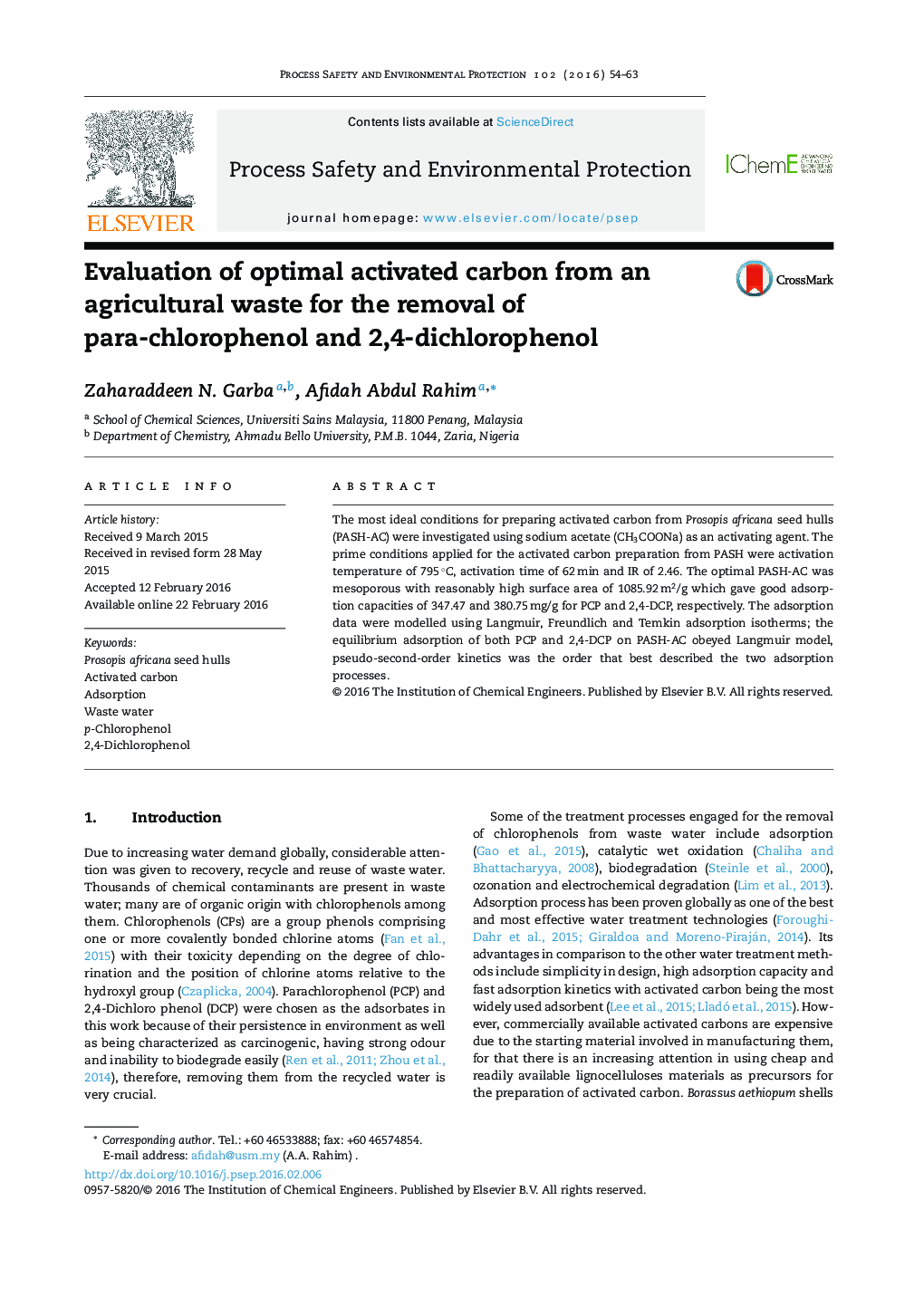| کد مقاله | کد نشریه | سال انتشار | مقاله انگلیسی | نسخه تمام متن |
|---|---|---|---|---|
| 588060 | 1453336 | 2016 | 10 صفحه PDF | دانلود رایگان |
• CH3COONa-activated carbon was produced from PASH by physicochemical activation.
• Central composite design was used to optimize the preparation variables.
• The optimum PASH-AC was mesoporous with BET surface area of 1085.92 m2/g.
• Maximum adsorption capacities were: 347.47 mg/g (PCP) and 380.75 mg/g (2,4-DCP).
• CH3COONa and PASH are promising activating agent and precursor respectively.
The most ideal conditions for preparing activated carbon from Prosopis africana seed hulls (PASH-AC) were investigated using sodium acetate (CH3COONa) as an activating agent. The prime conditions applied for the activated carbon preparation from PASH were activation temperature of 795 °C, activation time of 62 min and IR of 2.46. The optimal PASH-AC was mesoporous with reasonably high surface area of 1085.92 m2/g which gave good adsorption capacities of 347.47 and 380.75 mg/g for PCP and 2,4-DCP, respectively. The adsorption data were modelled using Langmuir, Freundlich and Temkin adsorption isotherms; the equilibrium adsorption of both PCP and 2,4-DCP on PASH-AC obeyed Langmuir model, pseudo-second-order kinetics was the order that best described the two adsorption processes.
Figure optionsDownload high-quality image (106 K)Download as PowerPoint slide
Journal: Process Safety and Environmental Protection - Volume 102, July 2016, Pages 54–63
